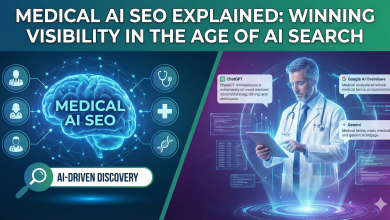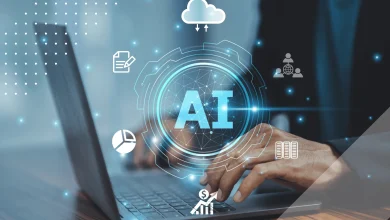
Artificial intelligence is reshaping education, and one of the most visible areas is math tutoring. For decades, students have relied on teachers, textbooks, and problem sets to practice solving equations or simplifying expressions. Now, AI tutors are providing guided, step-by-step explanations that walk learners through the process in real time.
This isn’t just about giving the right answer. It’s about showing the path to the answer, including highlighting reasoning, spotting errors, and reinforcing good problem-solving habits.
Done well, AI tutoring can feel less like a calculator and more like a patient instructor who never gets tired of explaining the same concept in a dozen different ways.
How AI Tutors Break Problems Down
At the heart of AI math tutoring is the ability to combine computational power with clear communication. Modern systems break problems into logical stages, ensuring each step builds on the last. That process often involves:
- Symbolic Reasoning: Parsing the structure of an expression or equation, identifying operators, and determining the right transformation rules.
- Tool Integration: Checking parts of a solution with specialized engines (like algebra solvers, graphing tools, or numeric calculators).
- Error Checking: Comparing intermediate steps with established rules to catch slips in logic or arithmetic.
- Feedback Loops: Adjusting explanations based on the learner’s progress, offering more detail if confusion is likely.
The result isn’t just a string of numbers. It’s a narrative of how and why each move is made. This ability to “show the work” is what sets AI tutors apart from simple answer-finding apps.
A Classroom Workflow Example
Consider a trig identity simplification problem. A teacher might ask students to prove that:
1sin(x)−cos(x)sin(x)=tan(x)\frac{1}{\sin(x)} – \frac{\cos(x)}{\sin(x)} = \tan(x)sin(x)1−sin(x)cos(x)=tan(x)
An AI tutor could break it down like this:
- Recognize that both terms on the left have the same denominator
- Combine them into a single fraction:
1−cos(x)sin(x)\frac{1 – \cos(x)}{\sin(x)}sin(x)1−cos(x)
- Recall the definition of tangent:
tan(x)=sin(x)cos(x)\tan(x) = \frac{\sin(x)}{\cos(x)}tan(x)=cos(x)sin(x)
- Suggest using a Pythagorean identity or algebraic manipulation to show equivalence
At this point, a safeguard might come into play. The system could double-check its progress against an external resource like a trig ratio calculator to verify that both sides simplify correctly.
If the AI’s approach matches the independent check, it can confidently continue; if not, it can adjust or flag the issue for the student. This kind of layered verification gives both students and educators confidence that the steps are not only logically sound but also validated against reliable tools.
Why Accuracy Safeguards Matter
Even the best AI systems can make missteps. In math, a single dropped negative sign can unravel a whole proof. That’s why safeguards are essential. Schools adopting AI tutors should look for platforms that include:
- External validation checks (like the calculator example above)
- Step-by-step transparency so students can follow the logic instead of memorizing an answer
- Error alerts that show when a solution might be off track
- Human override options so teachers can quickly step in if something looks wrong
By weaving these safeguards into classroom workflows, educators can ensure AI tutors enhance learning rather than introduce new confusion.
Benefits for Students and Teachers
When used thoughtfully, AI tutors can transform math education by:
- Personalizing Practice: Students can work at their own pace, getting extra help where needed.
- Building Confidence: Seeing a problem solved step by step reduces the intimidation factor.
- Supporting Teachers: AI can handle routine practice, freeing educators to focus on higher-order skills and one-on-one mentoring.
- Improving Equity: Learners who don’t have access to after-school tutoring can still get guided support.
These benefits make AI tutors a powerful supplement to traditional teaching, not a replacement.
Final Thoughts
AI tutors are changing the way students engage with math. By breaking problems into clear steps, validating their reasoning with safeguards, and giving learners space to practice, they can make a once-intimidating subject more accessible.
For teachers, these tools open the door to new workflows that reinforce lessons and extend classroom reach. For students, they provide a patient partner in problem-solving. The challenge now is to integrate AI in ways that maximize accuracy, equity, and long-term skill development.
With thoughtful use, AI tutoring can be more than just “homework help.” It can be a bridge to stronger confidence, deeper understanding, and lifelong learning in mathematics.




